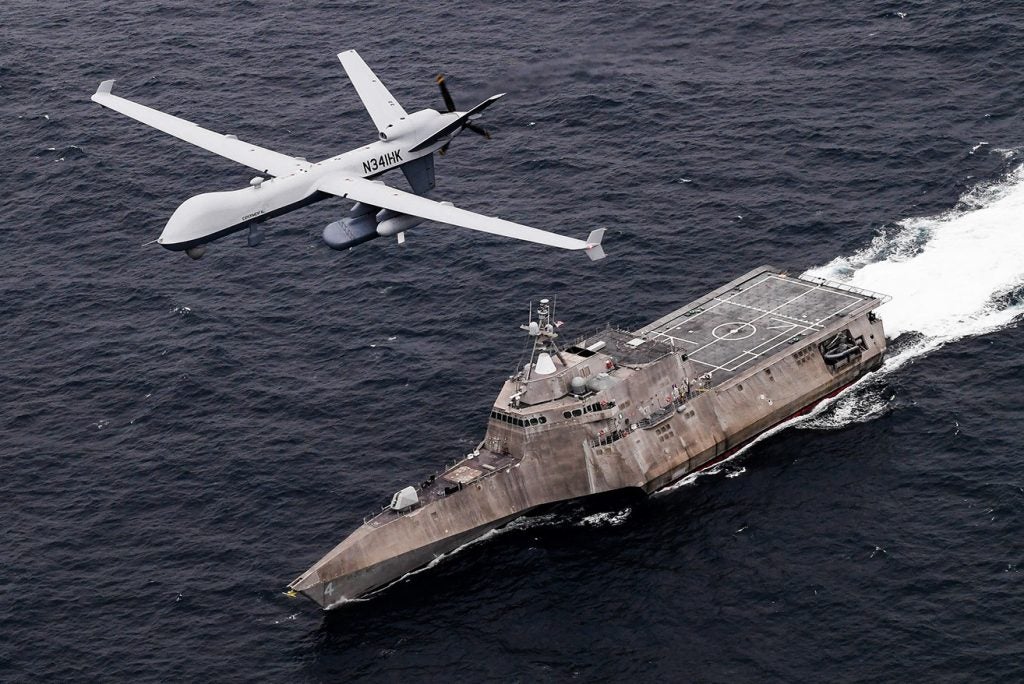US Navy Outlines Plan to Cut 4 Littoral Combat Ships
On 28 May, the long awaited Fiscal Year 2022 Budget request was submitted to Congress. While the overall requests across the board were not special, the Navy has outlined the decommissioning of 15 hulls. Four of those being from the troubled Littoral Combat Ship (LCS) class. Alongside seven Ticonderoga class Cruisers headed for decommissioning the Navy also proposed decommissioning of Freedom and Independence class ships, including: USS Coronado (LCS-4), USS Fort Worth (LCS-3), USS Detroit (LCS-7) and USS Little Rock (LCS-9). This will be the second time the Navy has tried to decommission ships of the class but ultimately failed due to Congress.
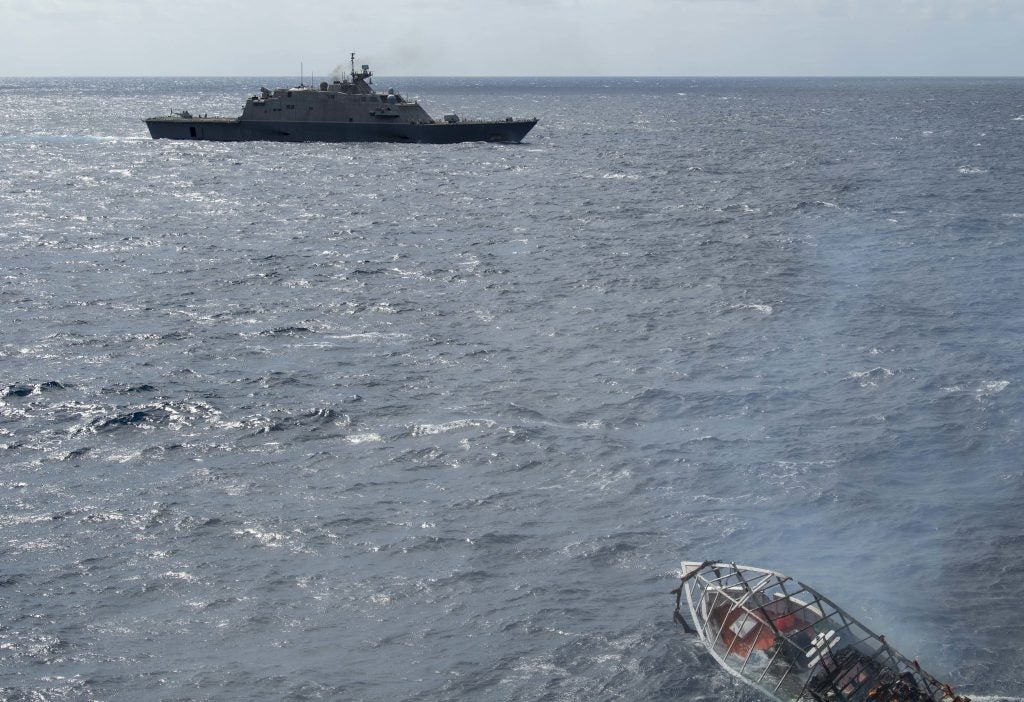
During the FY21 Budget request the Navy outlined plans to decommission the first four ships of the class. Navy leadership went at length to explain the reasoning behind their decisions, Chief of Naval Operations Michael Gilday at the time told Congress that the savings the Navy could make by not allocating further funds to upgrade these ships to combat standard was worth $2.5 billion. Congress blocked the divestment of the vessels and heavily critiqued the Navy leadership on their decisions to decommission ships during a time in which the Navy needs more ships.
In the current FY22 budget outline the Navy states it “avoids the cost to upgrade these ships to the common configuration and capability with the rest of the fleet and allows for investments in higher priority capability and capacity.” The document also states “LCSs 3 and 4 do not have mission packages (MP) assigned and the current MP procurement does not account for MP procurement for these two ships.” This move would free up $186 million for the Navy.
The LCS has been hampered by budgetary and technical setbacks. Last year both USS Detroit (LCS-7) and USS Little Rock (LCS-9) in the Freedom class variant had several gearbox issues. The Navy subsequently classified the failures as a Freedom class wide issue and halted further deliveries of the variants until the issue was solved. Lockheed Martin, the builder of the Freedom class variant, is currently working with the Navy to address the design issue. The Mission Modules of the class have become an area for Congress to slash funds from and allocate elsewhere across the Navy. This has led to further delays of the Mission Modules and in return Congress slashing more funds because of the delays.
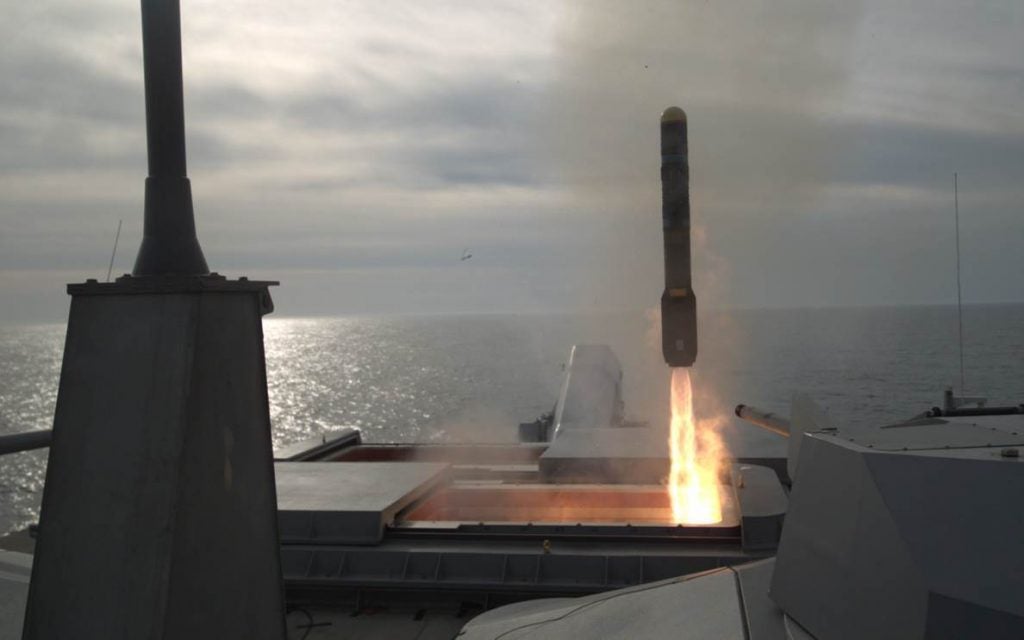
While the LCS has had a very troubled decade overall, recently Chief of Naval Operations (CNO) Michael Gilday announced during a hearing plans to split the class into Mine-Countermeasure (MCM) and Anti-Submarine Warfare (ASW) vessels. Despite this new emphasis on these modules and the Naval Strike Missile (NSM) segment of the Surface Warfare (SUW) package, the Navy budget included funds for 14 Surface to Surface Mission Modules (SSMM). Outfitting 15 vessels with the mine-countermeasure modules is a move in the right direction as the Navy’s current fleet of MCM vessels are the aging Avenger Class, the youngest of which is over 25 years old. This would allow the Navy to put the class to good use in an area that’s currently sorely overlooked.
The remaining 15 ships would be outfitted for the Anti-Submarine Warfare (ASW) mission module, this includes the new Raytheon AN/SQS-62 otherwise known as the DART MS (Dual Mode Array Transmitter Mission System) which combines a Variable Depth Sonar with a Multi-Function Towed Array. Alongside this, CNO Michael Gilday during the hearing mentioned the Navy’s plan to outfit 31 ships of the class with NSM (Naval Strike Missile) in an 18 month timespan. This was also reflected in the FY22 budget documents, In which the Navy seeks 34 Naval Strike Missiles. A significant increase over the FY21 order which was 15 Naval Strike Missiles.
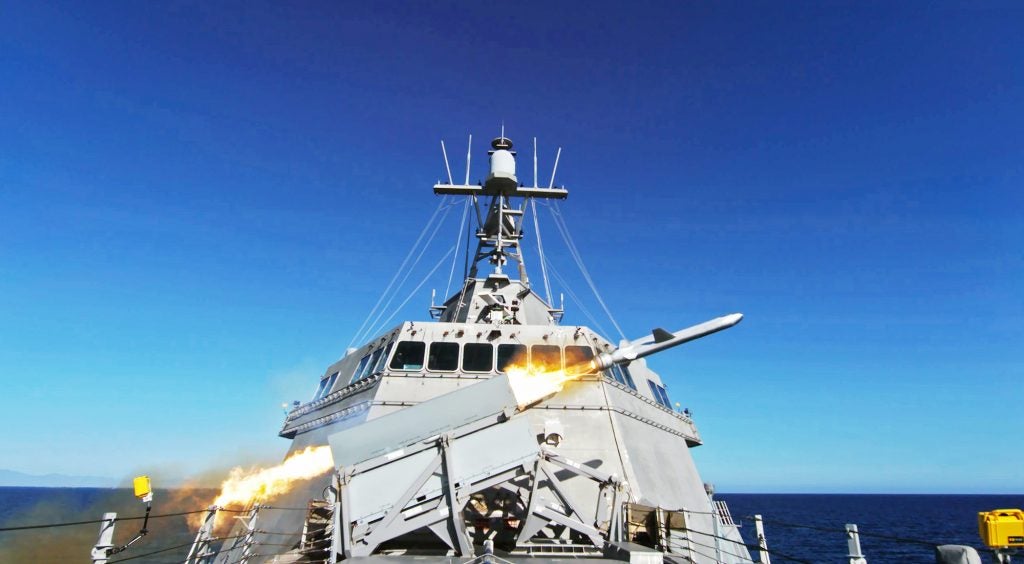
Further upgrades to the class were outlined by NAVSEA under the Lethality and Survivability program which is separated into two phases. Phase 1 includes overall improvement and outfitting of EW (Electronic Warfare) and ECM (Electronic Countermeasure) systems such as SEWIP (Surface Electronic Warfare Improvement Program) otherwise known as AN/SLQ-32 and NULKA decoy system. Other possible upgrades in this phase include shifting the Independence variant to the COMBATSS-21, which satisfies NAVSEA plans to integrate the ships via software to the AEGIS Common Source Library. Phase 2 of the program would look at upgrading the radars, adding Laser Weapon Systems and MK.41 VLS to support the Evolved Sea Sparrow Missile.
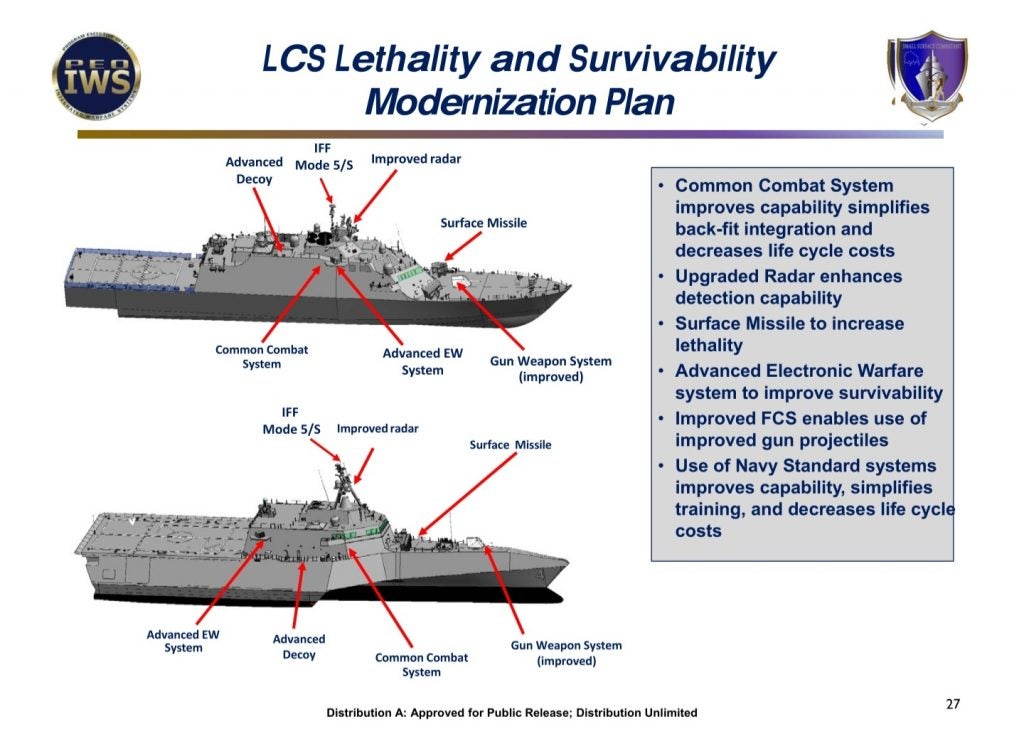
The LCS class has had a troublesome past due to the nature of the program structure, issues with the technology, and budgetary constraints from Congress. However these plans, if fully implemented, would give the Navy of tomorrow 31 modern hulls that provide more capability than the original LCS plan.

